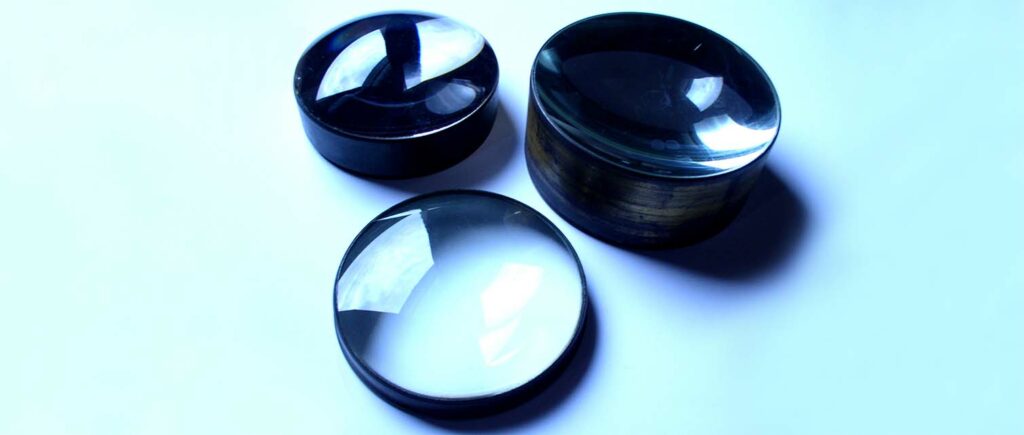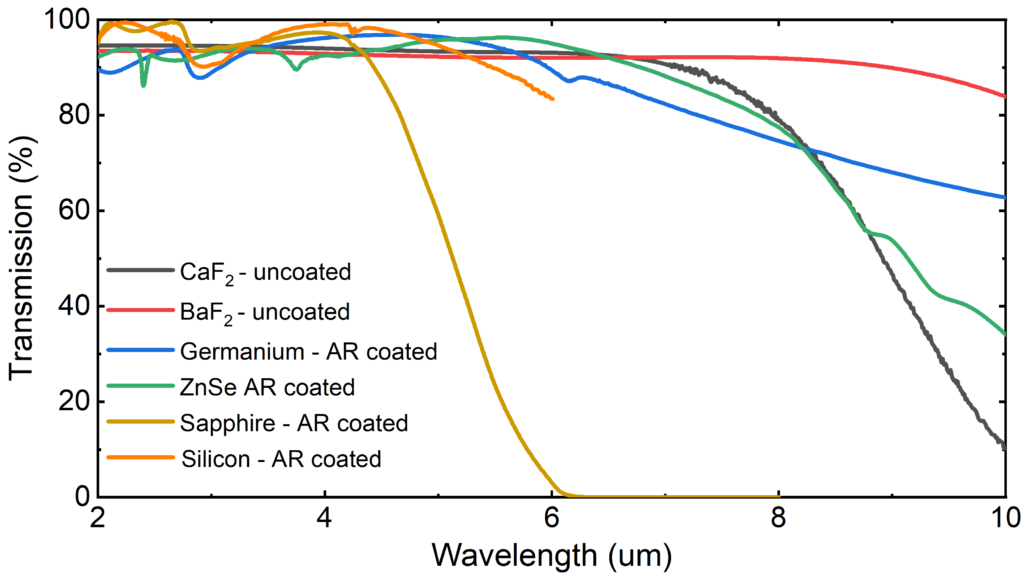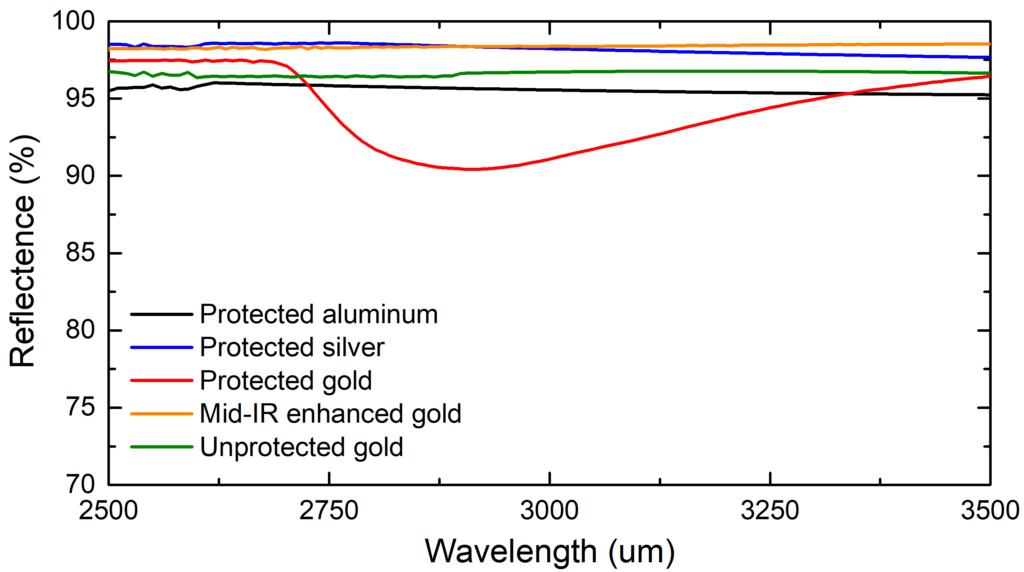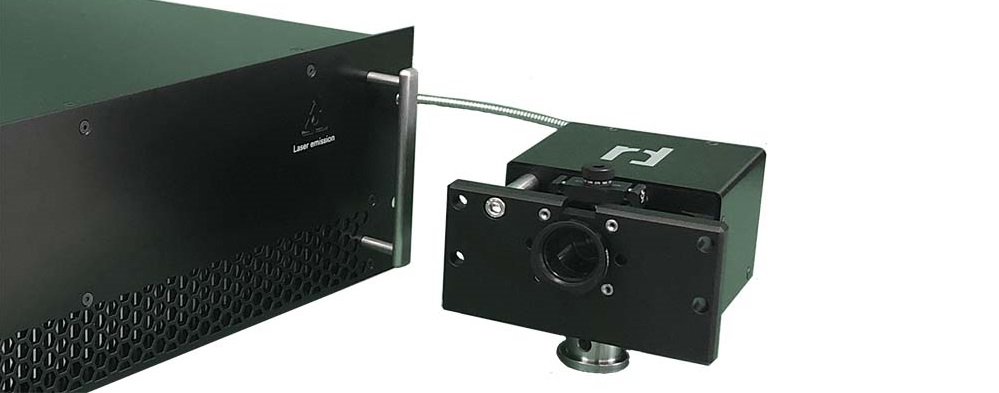
Laser systems operating in near infrared (from 0.75 μm to 1 μm) and short-wave infrared (between 0.9 μm and 2.5 μm) are widely used in many applications. As a result, laser experts are well acquainted with the common optical components such as lenses, windows, beam splitters, mirrors, polarizers and filters. Materials such as fused silica, BK7, and BBO are often used to fabricate optical components for use in the near and short-wave infrared ranges. These materials have excellent transmission properties up to 2000 nm, making them highly suitable for these applications.
On the other hand, the mid infrared region above 2000 nm, where Femtum’s lasers operate (between 2500 and 3500 nm), may be unfamiliar territory for some laser users, who might think that selecting the appropriate optical elements for their scientific or industrial laser application is going to be a challenge. However, it is not necessarily the case.
With the increasing demand for mid-infrared applications and lasers, the photonic market has responded with a growing offer of optical components tailored to this region. Today, a variety of optical components are available to meet the needs for mid-infrared laser applications.
If you are a laser user planning to work in the mid-infrared region and you are concerned about the availability of suitable components, this blog post is for you! Here, we aim at helping you find the best optical components for your application. In this blog post we will provide information about the most popular optical elements used in the mid-infrared region. However, it is important to note that there are also many other materials available for specific uses.
Mid-IR focusing optics
Choosing appropriate focusing and collimating optics has a crucial effect on the overall performance of laser systems. Lenses and mirrors are the main focusing and collimating optical components in the architecture of a laser system. They can be made of different materials and have high or low refractive index; each has its own set of advantages and disadvantages. High index focusing and collimating optics can have higher numerical aperture (NA) than low index optical components allowing smaller focus, namely stronger focal power. However, high NA components are more susceptible to aberrations and create higher reflections within the laser architecture which may impact the performance of the laser.
To reduce the reflectivity of high index optical components, anti-reflection coating is applied to each surface, making these components more expensive. In contrast, low NA optical components are less prone to aberrations and reflectivity, and are generally more cost-effective than high index components.
Many available materials in photonics market used in focusing and collimating optics in mid-infrared region along with their respective transmission ratios are described below.
Zinc selenide (ZnSe)
Components based on ZnSe substrate are widely used in high-power CO2 lasers (10.6 µm) and inexpensive HeNe alignment lasers (632 nm) in CO2 laser systems due to their low absorption at both laser wavelengths, their relatively low-cost, and ease of use. Hence, their broad transmission range and price enable them to be one of the ideal components used both in near and mid infrared range. They are commonly used as a focusing elements and are particularly popular in galvanometric scanners. ZnSe is a material with high refractive index (2.4362 near 3 μm). Lenses with high NA can be made with this material, but they requires anti reflection coating for most applications to achieve high transmission.
Calcium fluoride (CaF2)
CaF2 materials are mainly used in excimer lasers thanks to their transparency starting from UV range up to 8 μm. CaF2 is a water-resistant material and has superior performance at high temperatures. Its low refractive index (1.418) near 3 μm reduces Fresnel reflection (~ 3% at 0 deg AOI) and allows for use without anti-reflection coatings in most cases. These properties combined with low absorption coefficient and high damage threshold makes CaF2 components ideal for use in high power and high-energy mid-IR lasers. Additionally, CaF2 windows have been used as an endcap (heat and intensity spreader) on a fiber tip of a high-power mid-IR fiber lasers operating near 3 μm, demonstrating their excellent optical transmission and thermal conductivity [1].
Magnesium Fluoride (MgF2)
Magnesium fluoride (MgF2) is a chemically stable material that is resistant to water as well as mechanical and thermal shocks. It has broad transparency range, from UV up to 8 μm. Optical elements made of MgF2 has a low refractive index (1.36 at 3 μm), which makes them ideal for use in high-energy UV and vacuum UV lasers, as well as in mid-infrared lasers.
Barium fluoride (BaF2)
Barium fluoride components are popular for UV-based application, with excellent transmission ranging from UV to the mid-IR region up to 10 μm. With a refractive index of 1.46 near 3000 nm, BaF2 offers excellent optical and mechanical properties, making it ideal for high-temperature and high-pressure mid-infrared applications. Various types of BaF2 optical components including lenses, mirrors, polarizers and windows are available in the photonics market with options for anti-reflective coating.
Sapphire
Sapphire is a highly popular material thanks to its hardness, and resistance to permanent deformation, heat and pressure. As a result, sapphire is widely used in many areas such as defense, science, medicine and electronics. It also has a high thermal conductivity of 46 W/mK, making it an excellent material for heat dissipation compared to other materials such as quartz. In the laser industry, they are the ideal optical elements for high-power lasers working under the harsh environmental conditions such as multi kW ytterbium lasers for materials processing. With an average transmission of more than 95% between 2 and 4 μm, anti-reflective coated sapphire substrates are widely used in Er:YAG medical lasers operating around 3 μm, and holmium lasers operating near 2 μm, and can be easily found in photonics market. Additionally, sapphire single-crystal fibers can transmit up to 3.1 μm and are used in high-energy Er:YAG systems as fiber delivery cables.
Germanium
Germanium has broad transmission window, similar to ZnSe, ranging from 2 μm up to 14 μm. For an efficient transmission with Ge components, it is necessary to add an anti reflection coating on their surfaces due to its high refractive index (4.04 near 3 μm). While uncoated germanium transmission is lower than 50%, coated Germanium substrate can achieve an average transmission rate of 90% up to 14 μm. Germanium components have low dispersion, making them suitable for low chromatic aberration required applications. However, the refractive index of the Ge is temperature depended. Using this material in wide range temperature laser systems may not be ideal. This material is a common choice for low-power CO2 laser applications and low-power 3 μm lasers. Furthermore, while its high nonlinear index limits its use in high intensity short pulsed lasers, germanium’s high opacity below 2 μm makes it a suitable filter for mid-infrared lasers.
Silicon
Silicon is another good substrate for use as a focusing element in mid-infrared lasers operating between 2 μm and 5 μm. However, it is not suitable for use with CO2 lasers because of its high absorption band near 10 μm. Silicon has a high refractive index (>3.7 near 3 μm) and, thus a high nonlinear index that can limit its use in high peak power systems, but it offers several other advantages. It as a low dispersion in the mid-IR and its highly stable over a wide range of temperatures, making it a good choice for laser systems operating in extreme environments. As for germanium and ZnSe, silicon is also used in high NA focusing optics and is generally a more cost-effective choice.
The figure below presents the transmission curves of optical elements commonly used in focusing optics (data taken from [2]).

Mid-IR filters, windows and beamsplitters
Filters and windows are used to modify the laser power with or without altering its spectral content by absorbing or reflecting certain wavelengths. This is important to isolate unwanted light or control the amount of light entering or leaving the system.
In a mid-infrared laser architecture, windows are generally made by similar materials as mentioned above. In addition to the materials above, quartz is one of the common components used as a window because it has a flat transmission above 90% from 300 nm to 3000 nm. Its refractive index is around 1.45 (Fresnel of ~ 4% at 0 deg AOI) and can be used without anti-reflection coating. This widely used optical material is resistance to shocks and to high temperature and is not expensive. It can serve as an output or a protective window in commercial lasers to prevent from dust or other environmental changes.
CaF2 and ZnSe, on the other hand, are the most suited materials for beam splitter components because of their extended transparency range as compared to quartz. They are commonly found in photonics market with anti-reflection coated, wedged or not wedged options.
Metallic mirror coatings for mid-infrared
In addition to the optical components above, metallic mirror coatings are commonly used in infrared and mid-infrared laser systems as mirror elements. Coatings such as aluminum, silver, and gold can achieve an average reflection of over 95% from 2000 nm to 20000 nm. Due to a higher transmission than aluminum and lower cost than gold, galvanometric scanners primarily use AR-coated silver mirrors. Due to their high reflectance and relatively high damage threshold, these metallic coatings are suitable for most mid-infrared lasers. Protected or enhanced mirrors are recommended for mid-IR applications to ensure long-term durability. To compare the reflectivity of thin film aluminum, silver and gold coatings, please refer to the figure given below.

Other optical elements used in mid-infrared laser systems and their applications.
In mid-infrared polarization optics, waveplates are mainly based on MgF2 substrate since it is a birefringent material and it can be found with anti-reflection coatings at different operating wavelengths . MgF2 is also used as a substrate for crystal polarizer, as well as YVO4. In addition to its use as a crystal polarizer in mid-infrared, YVO4 is also a commonly used beam displacer substrate in mid-infrared polarization optics. It has a broad transmission range from UV to 3.5 μm and exhibits high birefringence, making it useful for changing polarization states.
While mid-infrared isolators are not as mature as their near-infrared counterparts, free-space isolators can still be readily found on the market up to 4.5 μm. However, the main problem with these components is their limited maximum power handling capacity when compared to near-infrared isolators. In addition, mid-infrared isolators are often polarization-dependent, which can reduce the transmission ratio of the beam.
Femtum’s lasers and their compatibility with mid-infrared optical elements
Femtum offers mid-infrared fiber lasers operating in the 2700 nm to 3500 nm wavelength range that are compatible with a wide range of readily available mid-infrared optical elements in the photonics market. At Femtum, we understand that every application is unique and requires tailored solutions. That’s why we also offer a range of additional optical elements including mid-infrared high-power collimators, beam expanders and fast shutters, to complement Femtum’s laser systems and simplify their integration into the industrial and scientific markets. Should you have any questions regarding our lasers or your specific application, please do not hesitate to contact us through our dedicated contact page.
References
[1] Goya, K., Uehara, H., Konishi, D., Sahara, R., Murakami, M., & Tokita, S., Stable 35-W Er: ZBLAN fiber laser with CaF2 end caps. Applied Physics Express, (2019).
[2] Thorlabs Inc, accessed 23 February 2023, http://www.thorlabs.com

